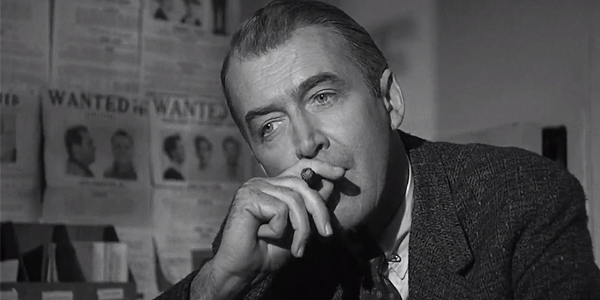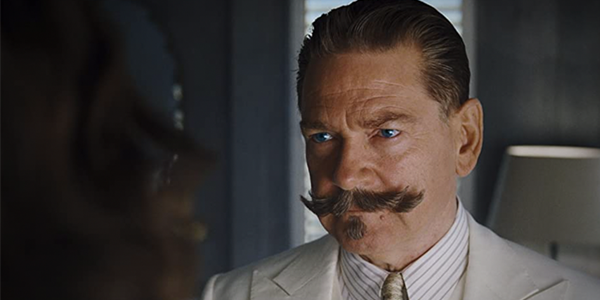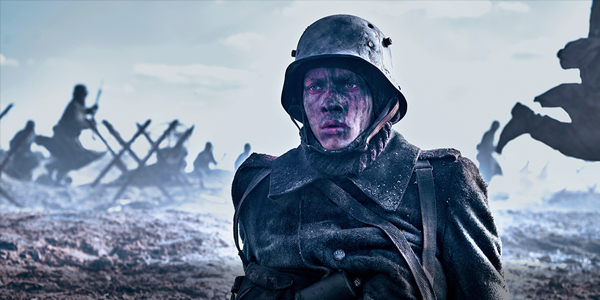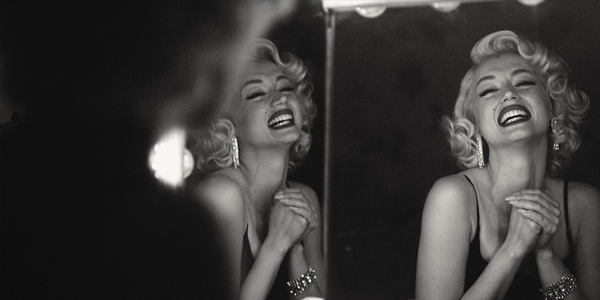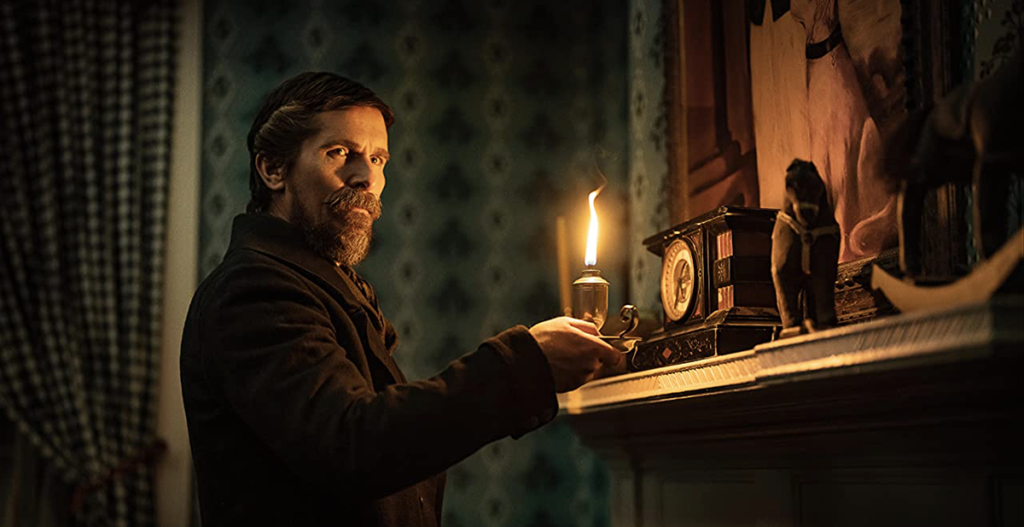
review | The Pale Blue Eye
Strong performances and striking visuals make this slow-burn 1800s murder mystery worth a look on Netflix
by Roger Kanno
January 14, 2023
The Pale Blue Eye, based on the book of the same name by Louis Bayard, is the third project to star Christian Bale and be helmed by writer-director Scott Cooper, both having previously worked together on Hostiles and Out of the Furnace. This dark murder mystery unravels as Augustus Landor (Bale) investigates the death of a young cadet at West Point in 1830. He is aided by another cadet, aspiring writer Edgar Allen Poe (Harry Melling), and together they set out to conduct the investigation. As with many films from streaming services, The Pale Blue Eye received a limited release in theaters on December 23, 2022 prior to its debut on Netflix beginning January 6.
The story unfolds in a relatively linear manner as cadet Poe and Landor, a retired detective enlisted by the senior officers at the academy, delve into the mysterious and tragic events. There are occasional flashbacks, with little dialogue, of Landor and his daughter Mattie, whom he says ran off, and is obviously haunted by her memory. And while he is tortured by her absence, the flashbacks serve mostly to demonstrate his pain, and do not explore the depth of their relationship, making it difficult to fully empathize with Landor or feel his sense of loss.
The cast includes several veteran and emerging actors who are excellent in their supporting roles, but the talents of Gillian Anderson and Robert Duvall especially are somewhat underutilized. That said, it is the performances of Bale and Melling that elevate this film. At first, the characterization of a young, exuberant Poe seems slightly over the top and out of place next to the stoic and measured nature of Landor. But as the story progresses, we see that this mirrors Poe’s station at West Point as a sensitive and aspiring writer in a rigid military academy. And in the end, his character and Melling’s performance are the equal of Landor and of Bale’s performance.
The visual style perfectly captures the gothic atmosphere of the story. Outdoor scenes are bathed in a soft bluish-white light, giving everything an austere appearance. Plenty of detail is captured in the texture of thick wool fabrics of the winter attire that conveys their density and heavy weight, with deep, rich blacks in the men’s overcoats and fine differentiation of the blues and grays in the cadet’s uniforms. The cinematography of Masanobu Takayanagi is striking, with overhead shots of snow-covered forests and lingering images of weathered buildings, many with light dustings of bright white snow to contrast with the somber grays of the architecture.
The relatively brighter and richer Dolby Vision color grade of wintery shots of landscapes and structures are eye-catching, but interior night scenes have an entirely different but equally impressive visual aesthetic. Many of these scenes are bathed only in faint candle light, creating flickering shadows on the actors’ faces that are surprisingly detailed yet have a smooth and organic quality. The low levels of light illuminate the backgrounds, making them appear slightly obscured as they would in reality with the dancing flames of the candles brightly popping but not excessively so. In one scene where Poe walks through the woods, the foggy backgrounds illuminated by his lantern appear eerily gray and gloomy while his absolutely jet-black silhouette is perfectly etched into the foreground. The result is a stunning visual that will look superb on displays with superb black levels.
The Dolby Atmos audio presentation is not particularly dynamic and lacks bass energy but is successful in providing a delicate and fitting accompaniment to the onscreen action. At the beginning of the film, a bucolic scene features Landor washing his hands in a stream as the flowing currents gurgle around him, and the music swells briefly then recedes to be replaced by the far-off fanfare of a bugle in a wonderfully atmospheric manner. The sound design is subtly effective throughout the film but there are a few instances where the object-oriented capability of Atmos is utilized to provide extremely conspicuous effects within the soundfield, such as voices or wind outside of the building where the scene is set. While this sounds very realistic, it is slightly distracting as it occurs infrequently, and only during a few scenes.
The Pale Blue Eye is a bit of a slow burn but the strong performances by the film’s two leads and some truly beautiful cinematography make it worth setting aside some time to stream this brooding mystery.
Roger Kanno began his life-long interest in home cinema almost three decades ago with a collection of LaserDiscs and a Dolby Surround Pro Logic system. Since then, he has seen a lot of movies in his home theater but has an equal fascination with high-end stereo music systems. Roger writes for both Sound & Vision and the SoundStage! Network.
PICTURE | The relatively brighter and richer Dolby Vision color grade of wintery shots of landscapes and structures are eye-catching but interior night scenes have an entirely different but equally impressive visual aesthetic
SOUND | The Atmos audio presentation isn’t particularly dynamic and lacks bass energy but succeeds in providing a delicate and fitting accompaniment to the onscreen action
© 2025 Cineluxe LLC


